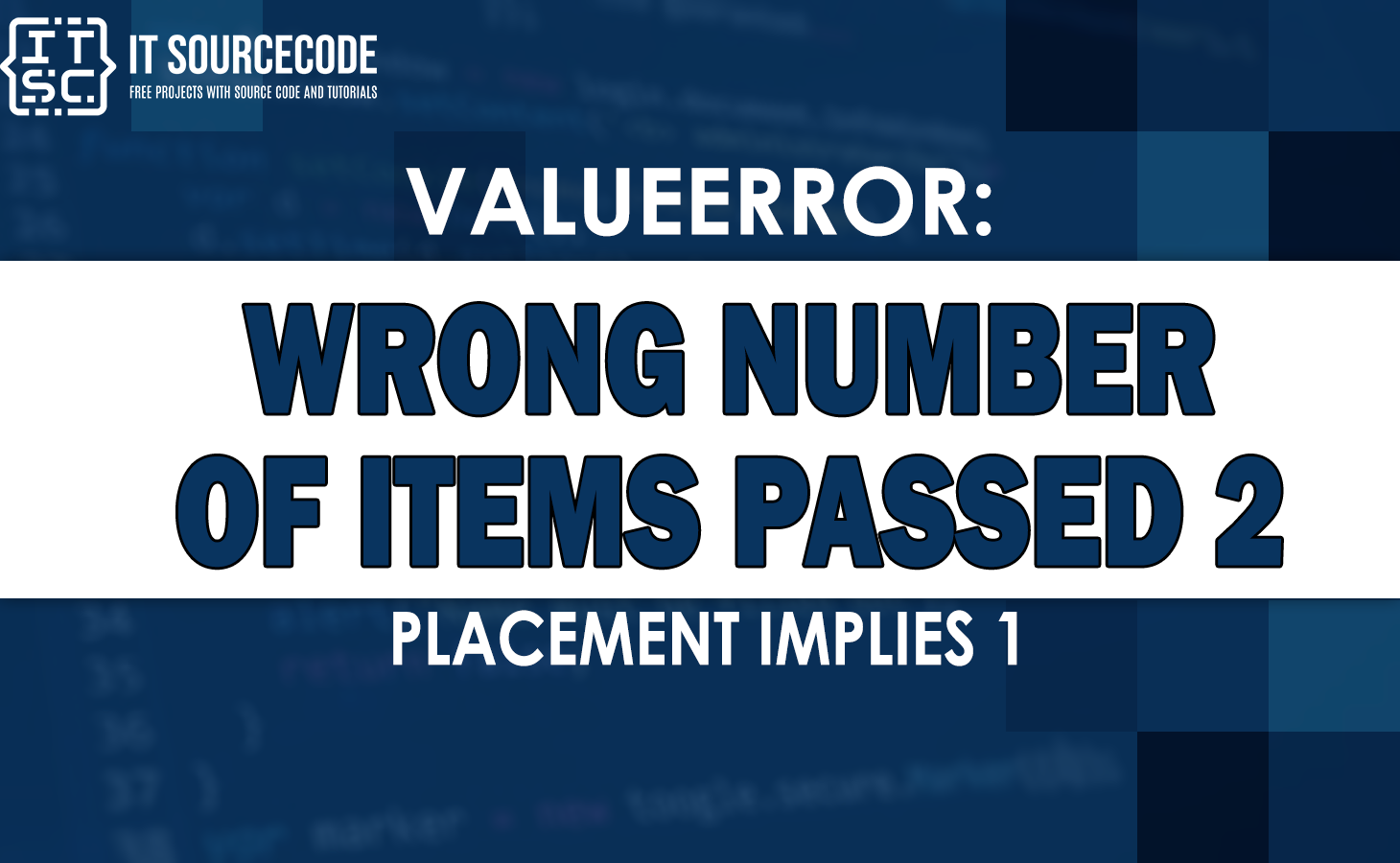This Valueerror: wrong number of items passed 2 placement implies 1 error commonly occurs when there is a mismatch between the number of arguments passed and the number of placeholders or format specifiers expected.
Essentially, it represents the number of items supplied that do not match the expected placement or formatting requirements.
Causes of the Valueerror
Here are the causes of the Valueerror wrong number of items passed 2 placement implies 1;
- Misalignment of Arguments and Placeholders
- Incorrect Usage of the .format() Method
- Inconsistent Number of Arguments
Solutions to Resolve the Valueerror
Here are the solutions to solve the wrong number of items passed 2 placement implies 1 error:
Solution 1: Verify Argument and Placeholder Alignment
To resolve the ValueError caused by misalignment, you will make sure that the number of arguments passed matches the number of placeholders in the format string.
For example:
employee_name = "Joshua"
address = "Manila"
message = "My name is, {}. I live in {}."
print(message.format(employee_name, address))Output:
My name is, Joshua. I live in Manila.
In this example, we provide two arguments (employee_name and address) that align perfectly with the two placeholders in the message string.
By ensuring this alignment, we avoid the ValueError and successfully format the string.
Solution 2: Verify Arguments in .format() Method
When using the .format() method, make sure that you provide the correct number of arguments and avoid including additional unessential arguments.
For example:
employee = "Romano"
age_year = 31
# Validating arguments using .format()
message_statement = "My name is {name} and I am {age} years old.".format(name=employee, age=age_year)
print(message_statement)Output:
My name is Romano and I am 31 years old.
By providing only the required arguments, we eliminate the mismatch between the number of items passed and the expected placement.
Solution 3: Ensure Consistency in the Number of Arguments
To fix the ValueError caused by inconsistent arguments, make sure that the number of items passed remains consistent throughout your code.
For example:
employee_firstname = ["Jude", "Glenn", "Caren"]
address = [28, 31, 29]
message = "My name is {} and I live in {}."
for employee_firstname, address in zip(employee_firstname, address):
print(message.format(employee_firstname, address))Output:
My name is Jude and I live in 28.
My name is Glenn and I live in 31.
My name is Caren and I live in 29.
By providing consistent pairs of arguments for each iteration, we avoid encountering the ValueError and obtained the desired formatting.
FAQs
The ValueError: Wrong number of items passed (2), placement implies (1) error is a Python exception that occurs when the number of items (arguments) passed to a function or method that it is not match the expected placement or formatting requirements.
To identify the cause of the ValueError, carefully analyze the code where the error occurs.
Check for any misalignment between the arguments and placeholders in string formatting operations, inappropriate usage of the .format() method, or inconsistencies in the number of arguments passed.
To prevent the ValueError, ensure that you carefully align the arguments and placeholders in string formatting operations, use the .format() method correctly, and maintain consistency in the number of arguments passed throughout your code.
Conclusion
In conclusion, we’ve discussed the ValueError: Wrong number of items passed (2), placement implies (1) error in Python.
We learned about its causes, provide practical examples, and offer solutions to resolve this error.
By understanding the importance of argument and placeholder alignment, proper usage of the .format() method, and consistency in the number of arguments, you can confidently resolve this error in your Python code.

